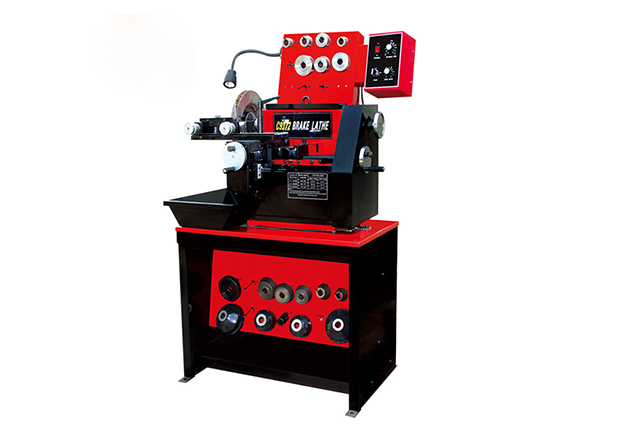
A brake lathe is an efficient tool for curing noise and vibration problems, often prolonging the life of brake systems. Basically, brake lathes corrects thickness variations on the rotor, a common condition caused either by one of two things:
Chronic, uneven contact of the brake pad on the rotor surface
Rust on the rotor surface (from extended or frequent contact with road salt or other corrosive contaminants)
There are two types of brake lathes. An on-car lathe often does a reliable job, because it’s installed in the same position as the brake caliper, basically mimicking the movement of the wheel with regard to the car’s calibrations. This provides the most accurate resurfacing possible.
For an off-car lathe or bench lathe, the rotor is removed from the car and mounted to the lathe. This type of lathe relies more on its own alignment, which is easily thrown out of spec from damage or frequent use. At best, a misaligned lathe will provide merely acceptable resurfacing; at worst, it might score or damage the rotor beyond the point it can be resurfaced.
Disc brakes have a wider surface area that is directly exposed to air. So heat dissipation is much better than drum brakes. This improves sustained braking efficiency, reducing heat-induced brake fade. They also drain water quickly whereas once water enters a drum brake, it stays there longer hindering braking efficiency. Disc brakes are also lighter – if you make drums for high-performance vehicles, they would be much larger and heavier, whereas large discs weight is comparatively less. For small low power vehicles like our 100cc bikes, drums still are relevant due to lower cost and weight difference compared to small discs isn’t as large.
Brake lathes are also high maintenance. You’d have to clean one after every use in order to prevent buildup. Debris can cause irreversible damage to brake rotors as they’re turned, and dust will make moving parts wear out too quickly. Bits (the parts that actually abrade the rotor) and oil must be changed regularly. They also create a lot of dust, noise, and vibration (undesirable for a small or home garage).
Unless you’ve got a large, lonely shop or a lot of money to invest, a lathe is probably not the best solution to your brake woes — if you really need to resurface rotors that frequently, you’ve probably got other problems. The next page will point you in the right direction for more brake, tool, and car quandaries.